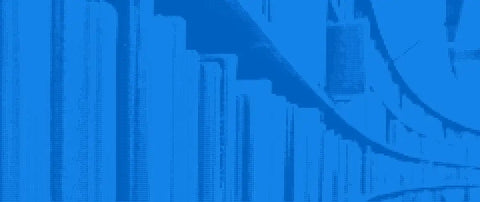在作者-日期參考文獻中引用多個來源
在大多數情況下,在括號中的作者日期參考中引用單一來源相對簡單。無論來源只有一位作者或多位作者,都應提供作者姓名以及出版年份:(Smith,2013)或(Smith,Jones&Thompson,2012)。根據所遵循的指導方針,最終作者姓名和日期之間的標點符號可能會被省略(Smith 2013),或者當涉及多位作者時,單詞“and”可能會代替符號“&”(Smith、Jones and Thompson,2012),但總體呈現方式是相同的。然而,當兩個或多個引用被括在一組括號內時,事情就會變得稍微複雜一些。標點符號必須清楚地區分不同的來源,在準備可發表的學術文獻時,應依照特定且一致的順序排列。
如果您需要在一組括號內提供同一作者的兩部或多部作品的引用,則日期應按時間順序排列在作者姓氏之後,並用逗號分隔。在列出來源時,從最早的出版日期到最近的出版日期,如 (Taylor, 1992, 1997, 2001, 2005),或從最近的出版日期到最早的出版日期,如 (Taylor, 2005, 2001, 1997, 1992),都可以。出版商提供的作者說明有時會指出哪種方式更可取,但即使沒有,聚集來源也不應以隨機或無序的方式列出,因此(Taylor,2001,1997,1992,2005)永遠是不合適的。無論您想要或需要使用哪種排列方式,都應在整個文件中保持一致,包括當您在單一括號中列出由同一組作者撰寫的多個來源時:(Smith,Jones&Thompson,1985,1997,2003,2012)。文內引用的時間順序應與參考文獻清單中列出相同來源的順序一致。
如果在單一括號內提供對不同作者撰寫的多個來源的引用,則個別引用通常以分號分隔,並且在大多數情況下按作者姓氏的字母順序排列:(Beedle,2013;Jacobson,2011;McNabb,2001;McNabb&Jones,1999;Taylor,1992,McNabb,2001;McNabb&Jones,1999;Taylor,1992,McNabb,2001;McNabb&Jones,1999;Taylor,1992,McNabb,2001;McNabb&Jones,1999;Taylor,1992,1997)。有時,這種聚集的參考文獻會按照出版日期的時間順序排列,通常是從最早的出版物到最新的出版物,因此上面列出的參考文獻組將採用這種形式:(Taylor,1992,1997;McNabb&Jones,1999;McNabb,2001;Jacobson,2011;Beedle,2013)。但是,也可以顛倒順序,將最新的出版物放在第一位。對於特殊情況和特定原因,可能需要採用不同的安排 - 因為,例如,句子中實際引用的來源是第一個引用的,儘管按字母順序或時間順序它不會排在第一位 - 但除此之外,所選的順序應該在整個文檔中保持一致。
如果引用了兩個或多個日期相同且由同一作者撰寫的來源,則需要加以區分,這通常是透過在每個日期後添加小寫字母來實現的,而不管您使用哪種作者-日期引用樣式:(Beedle,2013a,2013b)和(Smith,Jones&Thompson,2012a,2012b,2012c)就是很好的例子。每次引用相關來源時以及在最終參考文獻列表中,這些字母都應與日期一起出現,以便文內引用相匹配並準確地引導讀者找到列表中的正確來源。事實上,透過文內引用提供的有關作者和日期的所有內容都必須與隨附列表中的相同信息完全對應,因此在提交作品出版之前,應始終仔細比較文內引用和參考文獻列表中的作者姓氏和出版日期,以確保絕對的準確性和一致性。
為什麼選擇我們的編輯和校對服務?
在 Proof-Reading-Service.com,我們透過龐大且極其敬業的學術和科學專業團隊提供最高品質的期刊文章編輯、論文校對和線上校對服務。我們所有的校對人員都是英語母語人士,擁有研究生學位,他們的專業領域涵蓋了廣泛的學科,因此我們能夠幫助我們的國際客戶進行研究編輯,以改進和完善各種學術手稿,從而成功出版。我們的稿件編輯和校對團隊中許多經過精心培訓的成員主要負責擬在學術期刊上發表的文章,運用嚴格的期刊編輯標準,確保每篇論文中使用的參考文獻和格式符合期刊對作者的指示,並糾正任何語法、拼寫、標點或簡單的打字錯誤。透過這種方式,我們使客戶能夠以清晰準確的方式報告他們的研究,以打動收購校對員並實現出版。
我們為各種科學期刊論文的作者提供的科學校對服務尤其受歡迎,但我們也提供手稿校對服務,並擁有校對和編輯所有學術學科以及其他學科手稿的經驗和專業知識。我們的團隊成員專門從事醫學校對服務,我們的一些專家專門致力於論文校對和手稿校對,透過最嚴格的博士論文編輯和期刊文章校對實踐,為學者提供提高格式和語言使用能力的機會。無論您是在準備會議論文以供展示,完善進度報告以供與同事分享,還是面臨編輯和完善任何類型學術文獻以供出版的艱鉅任務,我們專業團隊的合格成員都可以提供寶貴的幫助,讓您對您的書面作品更有信心。
如果您正在為學術或科學期刊準備一篇文章,或者計劃在不久的將來實現這一目標,那麼您可能會對一本新書《期刊出版指南》感興趣,該書可在我們的「期刊發表研究成果的技巧和建議」網站上找到。








